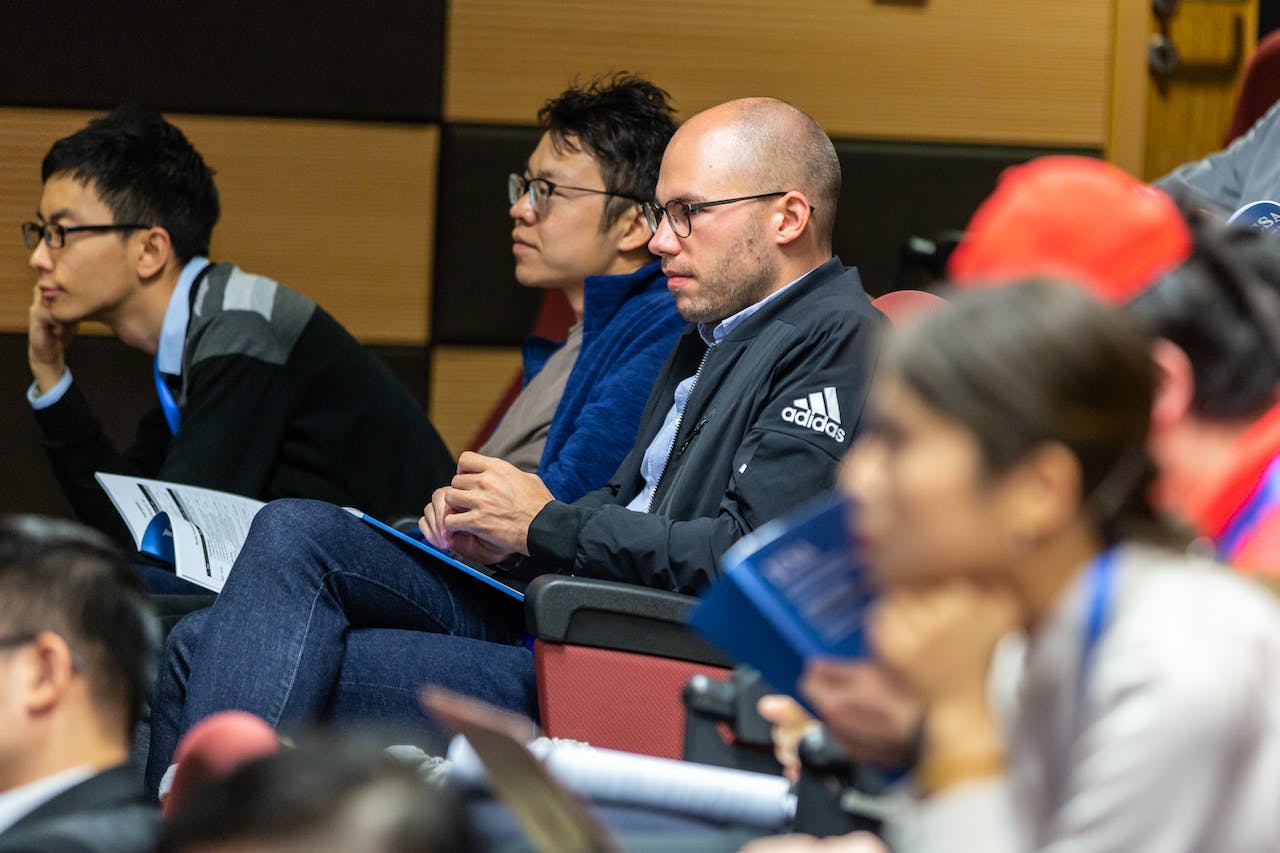
Examining the Student Loan Crisis: How it’s not working well?
- Last Updated - 04/14/2024 - 11:54 AM
- Top USA Universities

Introduction:
The student loan crisis in the United States has become a pressing issue, garnering national attention and sparking debates about the accessibility and affordability of higher education. As the cost of attending universities continues to rise, students and graduates find themselves burdened with staggering amounts of student loan debt. In this article, we will delve into the complexities of the student loan crisis, exploring the challenges it poses and potential solutions to address this growing issue.
The Rising Cost of Higher Education:
The cost of higher education in the United States has been steadily increasing, outpacing inflation and wage growth. Tuition, fees, and other associated expenses have become significant financial barriers for many aspiring students. As a result, individuals are increasingly reliant on student loans to fund their education, leading to a surge in overall student debt. This situation has far-reaching implications, affecting not only the financial well-being of students but also the broader economy.
The Impact on Students and Graduates:
The burden of student loan debt has profound effects on the lives of students and graduates. Many face delayed milestones such as home ownership, marriage, and starting a family due to the financial strain of repaying loans. Additionally, the mental and emotional toll of carrying substantial debt can hinder career choices and personal development. The fear of default and the long-term financial consequences create a pervasive sense of insecurity among borrowers, impacting their overall well-being.
Challenges in Repayment:
Repaying student loans has become a significant challenge for many borrowers. High-interest rates, compounded by the extended length of repayment periods, contribute to the accumulation of substantial debt. Graduates entering the workforce often face entry-level salaries that may not align with their debt obligations. This misalignment between income and debt burden creates a cycle of financial stress, limiting the ability of borrowers to meet their basic needs and hindering economic mobility.
Government Policies and Legislative Efforts:
The federal government plays a central role in student loan programs through the Department of Education. While various repayment plans and loan forgiveness programs exist, navigating these options can be complex and overwhelming for borrowers. Legislative efforts to address the student loan crisis include proposals for loan forgiveness, interest rate reductions, and tuition-free college initiatives. However, the debate on the feasibility and potential consequences of these measures continues, underscoring the complexity of finding a comprehensive solution.
Private vs. Federal Loans:
In addition to federal student loans, private loans from financial institutions contribute to the overall student debt landscape. Private loans often lack the flexible repayment options and borrower protections provided by federal loans, amplifying the financial challenges faced by borrowers. Examining the role of private loans in the broader student loan crisis is crucial for understanding the full scope of the issue and developing effective solutions.
Financial Literacy and Education:
Addressing the student loan crisis requires proactive efforts to enhance financial literacy and education. Many students enter higher education without a comprehensive understanding of loan terms, interest rates, and the long-term implications of borrowing. Implementing educational programs that equip students with the knowledge to make informed financial decisions is essential for preventing excessive debt accumulation and promoting responsible borrowing practices.
Innovations in Higher Education Financing:
Exploring innovative financing models is another avenue for addressing the student loan crisis. Income-share agreements (ISAs) and other alternative financing options offer alternatives to traditional student loans. These models tie repayment to a percentage of a graduate’s income, aligning financial obligations with post-graduation success. While these approaches present new possibilities, careful consideration of their implications and widespread adoption is needed to make a substantial impact.

Policy Recommendations and Systemic Changes:
Addressing the student loan crisis requires systemic changes and comprehensive policy recommendations. Policymakers need to consider measures such as interest rate reductions, increased funding for need-based grants, and the expansion of income-driven repayment plans. Addressing the root causes of rising tuition costs, exploring ways to provide affordable higher education options, and advocating for transparent and fair lending practices are crucial steps toward long-term solutions.
Collaboration Between Educational Institutions and Employers:
Enhanced collaboration between educational institutions and employers is vital in preparing students for the workforce and easing the burden of student debt. This involves aligning curricula with industry needs, providing students with practical skills, and facilitating internship and co-op programs. Employers can also play a role in offering tuition assistance programs or loan repayment benefits as part of employee benefits packages, promoting ongoing education and professional development.
Global Perspectives and Comparative Analysis:
To gain a deeper understanding of the student loan crisis, examining global perspectives and comparative analyses can provide valuable insights. Analyzing successful models in other countries, where higher education is more affordable or student debt is less prevalent, can offer potential solutions and inform effective policy changes in the United States.
Conclusion:
In conclusion, the student loan crisis in the United States represents a multifaceted challenge that requires comprehensive and collaborative solutions. Examining the rising cost of higher education, the impact on students and graduates, challenges in repayment, government policies, private loans, financial literacy, innovative financing models, policy recommendations, systemic changes, and global perspectives offers a holistic perspective on the issue. As the nation grapples with finding viable solutions, addressing the student loan crisis is not only an economic imperative but also a crucial step toward fostering equitable access to education and mitigating the long-term financial burdens on current and future generations. Through a concerted effort from policymakers, educational institutions, employers, and society at large, meaningful changes can be implemented to pave the way for a more accessible, affordable, and sustainable higher education system.
You might like these..
Randomly chosen articles that you might like.

Cultivating Change: The Vital Role of Universities in Promoting Sustainability and Environmental Consciousness
Universities play an integral role in shaping the beliefs behavior, values, and behaviors of the next generation. In an age of

Best Data Science Course Online in India 2024
Introduction: Data is now the currency of innovation and progress in the age of digitization. A record of every transaction, click,

The Pinnacle of Education: Why USA Universities Stand Out Globally!
In the vast landscape of higher education, USA universities emerge as beacons of excellence, attracting students from every corner of

Choosing the Best University in USA: A Guide to Select the Top USA Universities.
Choosing the best University in USA is a crucial choice that will have a big impact on your educational journey

Anyone from India can apply to USA Universities. Yah! It’s easy.
Yes, individuals from India can certainly apply to USA Universities. The application process for U.S. universities can be competitive and

USA Universities are great in terms of Sports as well as education. Yes, You heard it right!
The perception that USA Universities are great in terms of education and sports is shaped by several factors. Here are

Best Universities in USA, You can apply. Yes, it’s correct.
Determining the Best Universities in USA can depend on various factors such as academic programs, faculty expertise, resources, location, and

How to Apply to Any University in USA, Super easy, very simple, and effective.
You can successfully navigate the application process to University in USA with a little planning and attention. Here is a guide

How to apply at Top Universities 2023, follow these steps.
Applying to Top Universities 2023 in USA typically involves several steps. Here’s a general guide to help you through the

USA Universities are not good, Is this correct? discuss.
USA Universities are home to many prestigious universities and research institutions that are globally recognized for their academic excellence and

You should not do this If you get a chance to USA university. Try them now!
Starting university in a new country, especially the United States, can be an exciting but challenging experience. Here are some

Most Common Mistakes while searching for a new University in the USA, Stay Safe.
While searching for University in the USA, students may make common mistakes that can impact their decision-making process and overall

USA Universities are not good! Says the expert, is that correct?
Certainly! Here’s a more detailed exploration, broken down into Reality of USA Universities, to provide a comprehensive understanding of the

Why and how USA universities become so Popular? Something wrong here.
The popularity of USA Universities can be explained in simple terms through a variety of factors. Let’s break it down:

Why does everyone blindly trust Universities in USA?
While it may not be accurate to say that everyone blindly trusts Universities in USA, there are several reasons why

New Academic Updated! USA Universities are not evolving?
USA Universities are constantly innovating and developing new academic programs to meet the evolving needs of students and the demands




